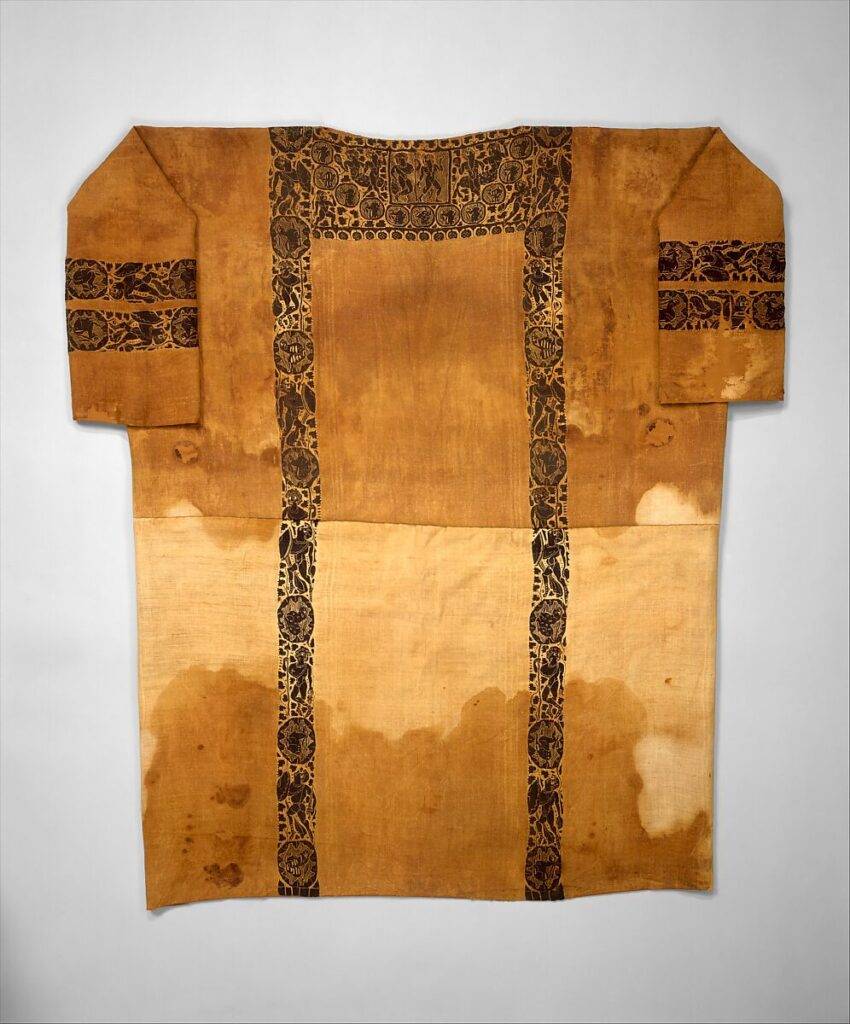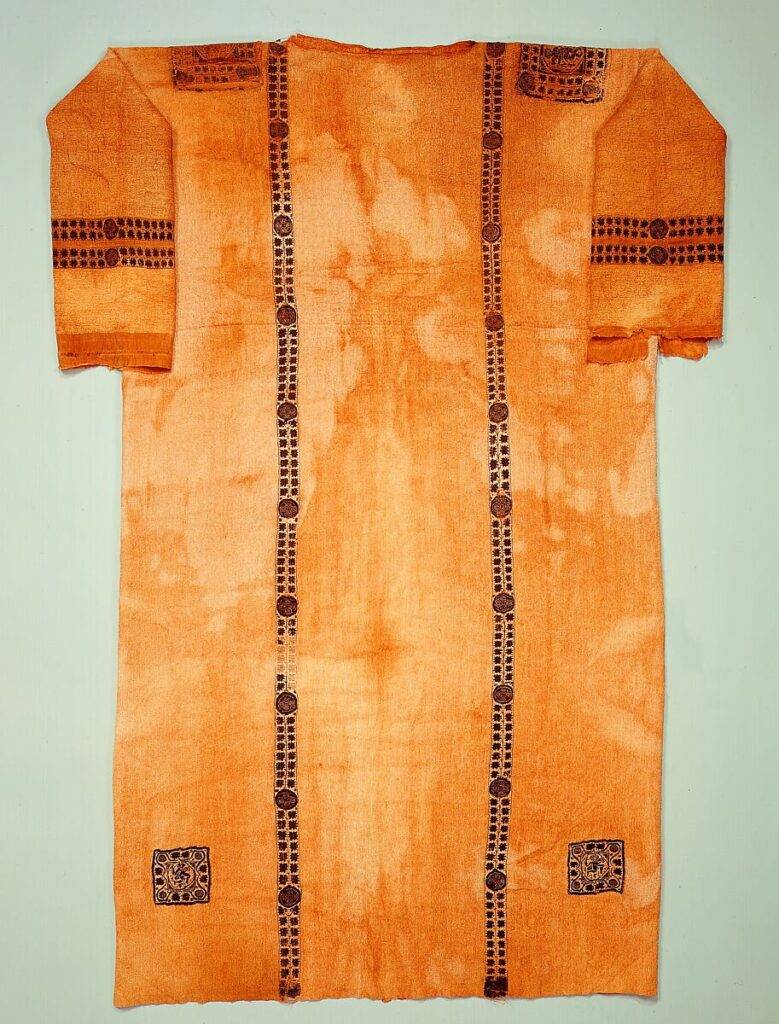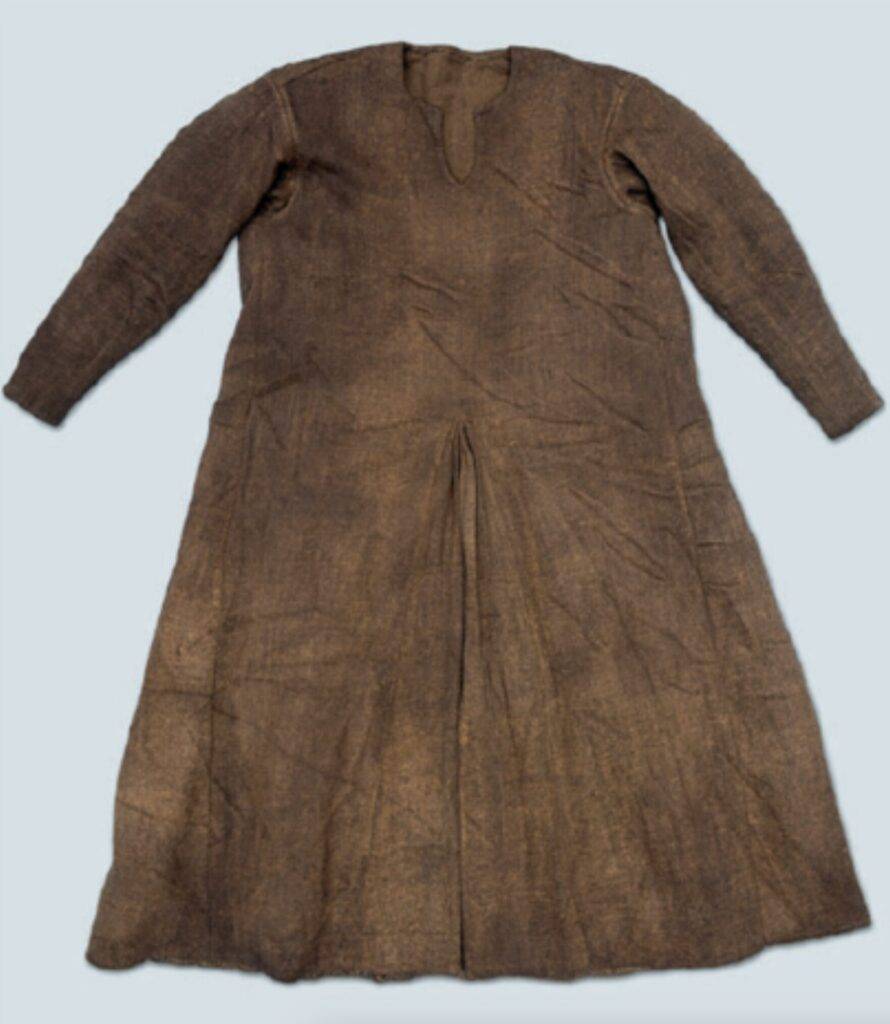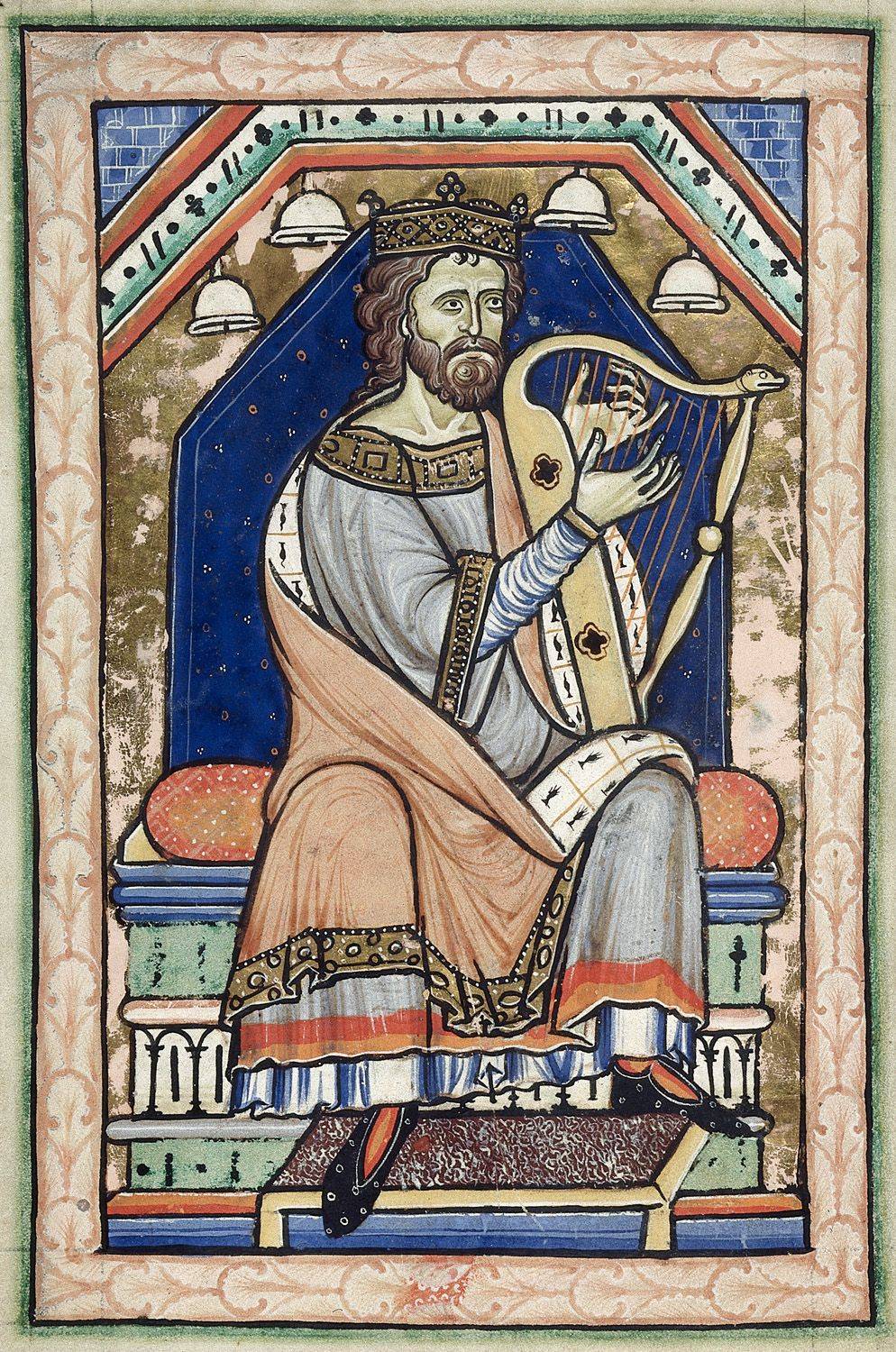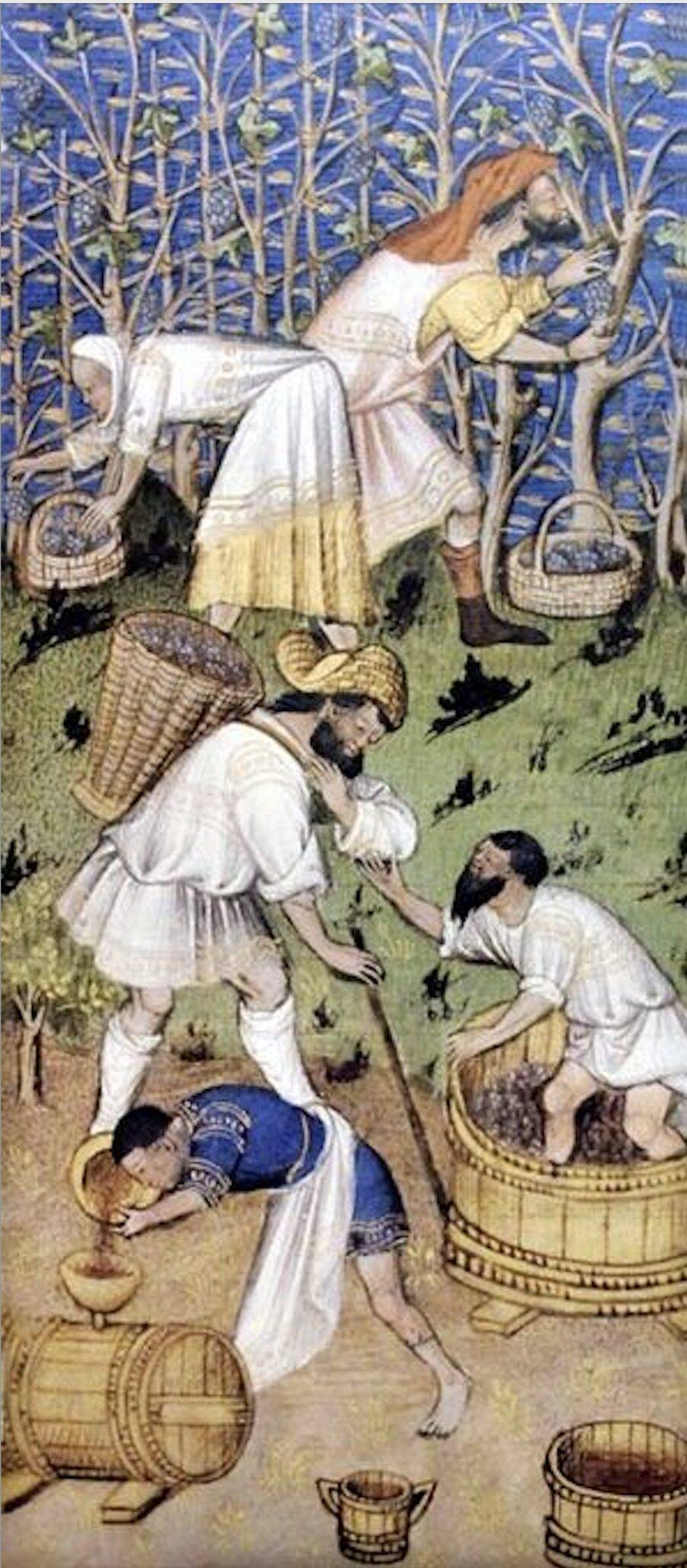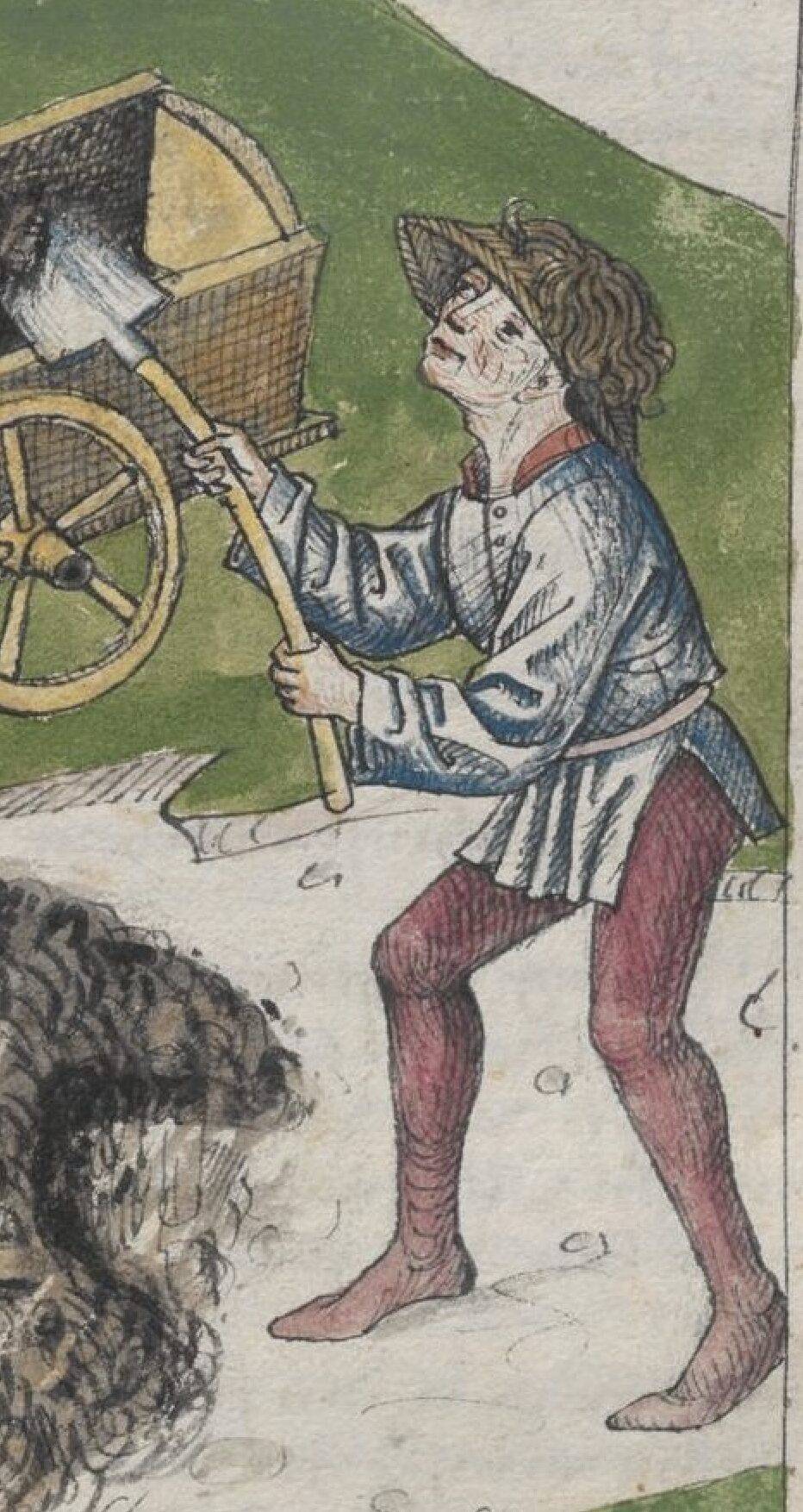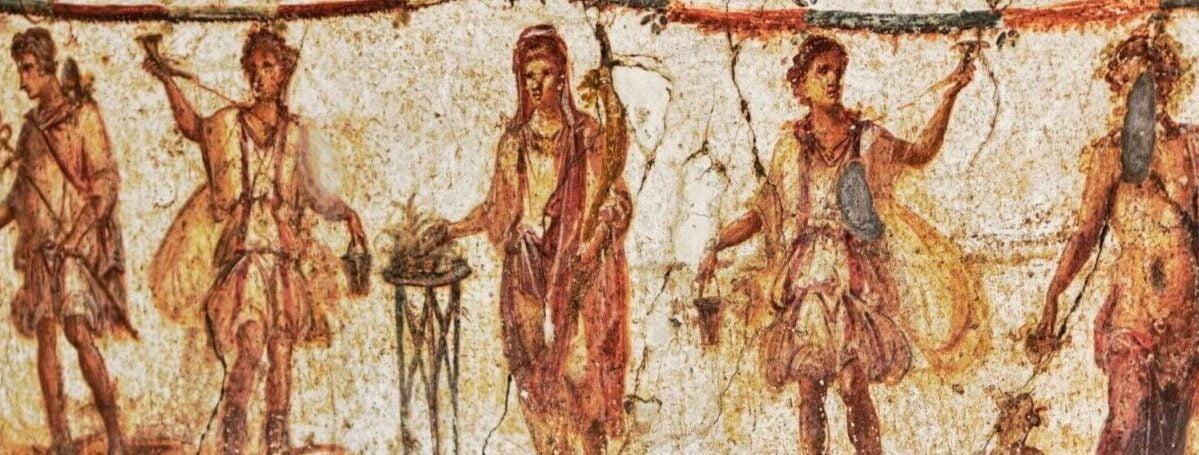
History of the shirt vol.1
The shirt is one of the garments with a long history, dating back to ancient Egypt and continuing to the present day. In ancient Egypt, simple shirts made from linen fabric were common. Similarly, in ancient Greece, the tunic, a loose-fitting garment, was widely worn. This tunic, characterized by its design of being fastened with brooches at the shoulders, was popular across various social strata and worn by both men and women.
Subsequently, during the Roman Empire, shirts known as tunica became widespread. In medieval Europe, while maintaining their basic shape, shirts became more elaborate with richer decorations and materials. Particularly, the dress shirt evolved through various social and cultural transformations over the centuries into the refined style we see today.During the Renaissance in the 16th century, dress shirts adorned with luxurious embroidery and lace became fashionable among the nobility. By the 19th century, influenced by the Victorian era, the modern dress shirt’s design began to take shape. Today, dress shirts are widely recognized as essential items for business and formal occasions.
This site explores the evolution of the shirt, detailing historical styles such as the Greek tunic, the Roman tunica, and the ruff, leading up to the modern dress shirt. Additionally, we will delve into the design, materials, and occasions for wearing shirts across different eras, showcasing how the shirt has developed into its current form. By tracing this history, you will gain a deeper understanding of the cultural background and fashion changes embedded in the shirt.
シャツは、古代エジプトから現代までの長い歴史を持つ衣類の一つです。古代エジプトの時代には、リネンの布を使って作られたシンプルな形のシャツが見られました。同様に、古代ギリシアでは、チュニックとして知られるゆったりとした衣装が一般的でした。このチュニックは、肩にブローチを使って留めるデザインが特徴で、男女問わず幅広い階層で愛用されました。 その後、ローマ帝国時代にはトニカとして知られるシャツが広まり、中世ヨーロッパでは、基本的な形状を維持しながらも装飾や素材が豊かになりました。特にドレスシャツは、数世紀にわたってさまざまな社会的、文化的変遷を経て、現代の洗練されたスタイルへと進化しました。 16世紀のルネサンス期には、豪華な刺繍やレースをあしらったドレスシャツが貴族の間で流行し、19世紀には、ビクトリア朝の影響で現在のドレスシャツに近い形が確立されました。今日では、ドレスシャツはビジネスやフォーマルな場に欠かせないアイテムとして広く認識されています。 本サイトでは、シャツの進化の過程を探り、ギリシアのチュニックやローマのトニカ、そしてラフといった歴史的なスタイルから、現代のドレスシャツまでを詳しく解説していきます。さらに、各時代のシャツのデザインや素材、着用される場面についても詳しく取り上げ、シャツがどのようにして現在の形に至ったのかを紹介します。歴史を辿ることで、シャツに込められた文化的背景やファッションの変遷をより深く理解していただけることでしょう。その後、ローマ帝国時代にはトニカとして知られるシャツが広まり、中世ヨーロッパでは、基本的な形状を維持しながらも装飾や素材が豊かになりました。特にドレスシャツは、数世紀にわたってさまざまな社会的、文化的変遷を経て、現代の洗練されたスタイルへと進化しました。16世紀のルネサンス期には、豪華な刺繍やレースをあしらったドレスシャツが貴族の間で流行し、19世紀には、ビクトリア朝の影響で現在のドレスシャツに近い形が確立されました。今日では、ドレスシャツはビジネスやフォーマルな場に欠かせないアイテムとして広く認識されています。
本サイトでは、シャツの進化の過程を探り、ギリシアのチュニックやローマのトニカ、そしてラフといった歴史的なスタイルから、現代のドレスシャツまでを詳しく解説していきます。さらに、各時代のシャツのデザインや素材、着用される場面についても詳しく取り上げ、シャツがどのようにして現在の形に至ったのかを紹介します。歴史を辿ることで、シャツに込められた文化的背景やファッションの変遷をより深く理解していただけることでしょう。すが、シャツの生産には依然として多くの人手が必要です。ここでは、製造工程を順に説明します。人類の歴史と叡智の集大成とも言えるこの立体的な製品をぜひ肌で感じてください。
Characteristics: Rule of the Pharaohs, pyramid construction, linen garments
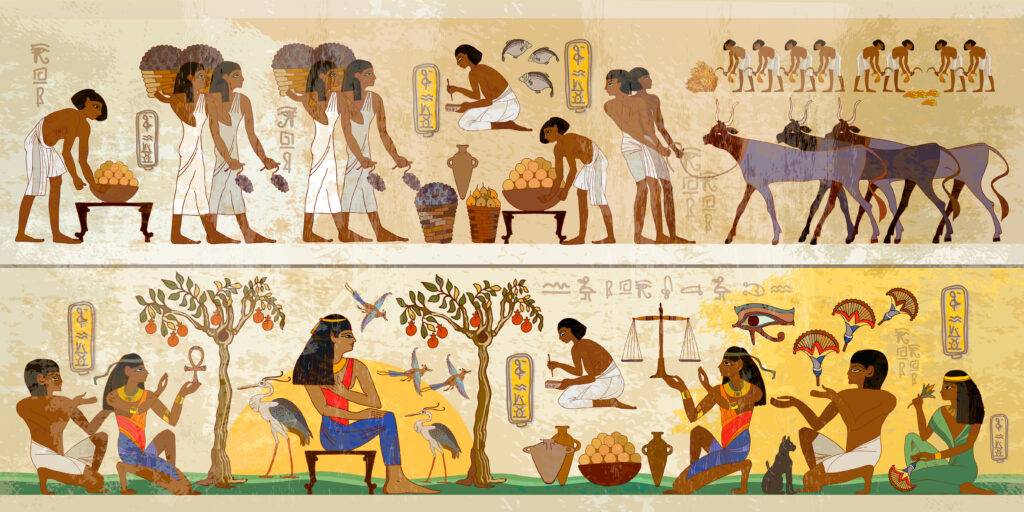
特徴: ファラオの統治、ピラミッド建設、リネンの衣服
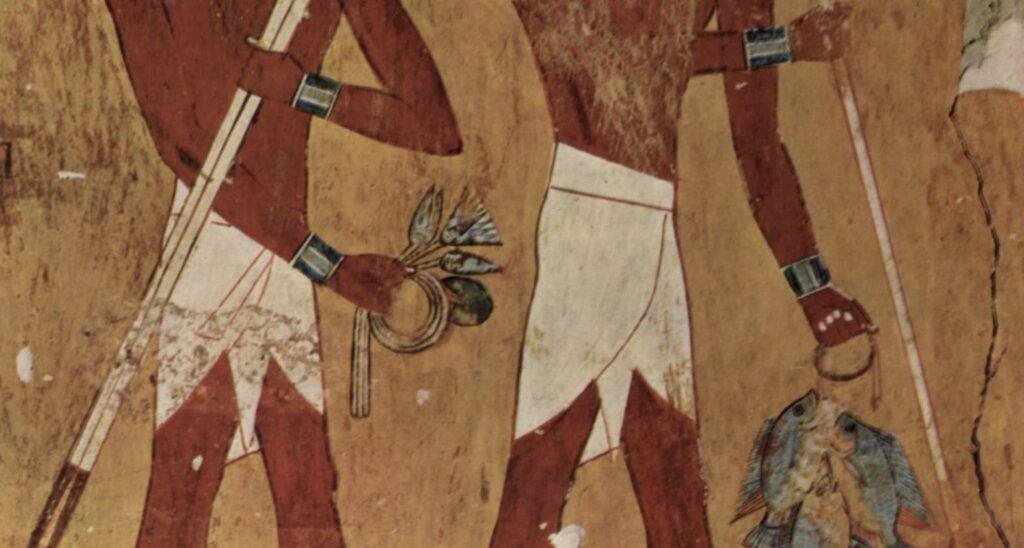
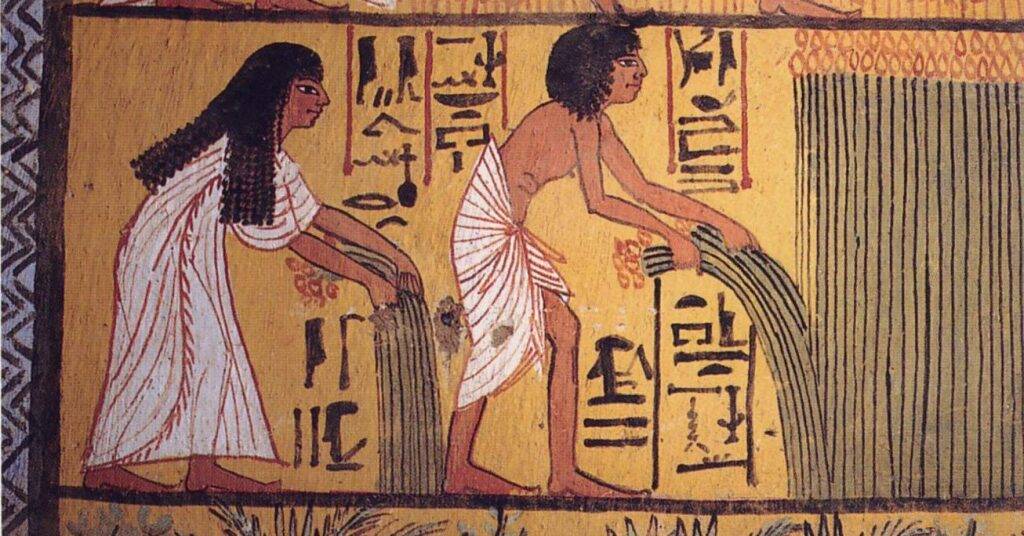
Characteristics: Rule of the Pharaohs, pyramid construction, linen garments
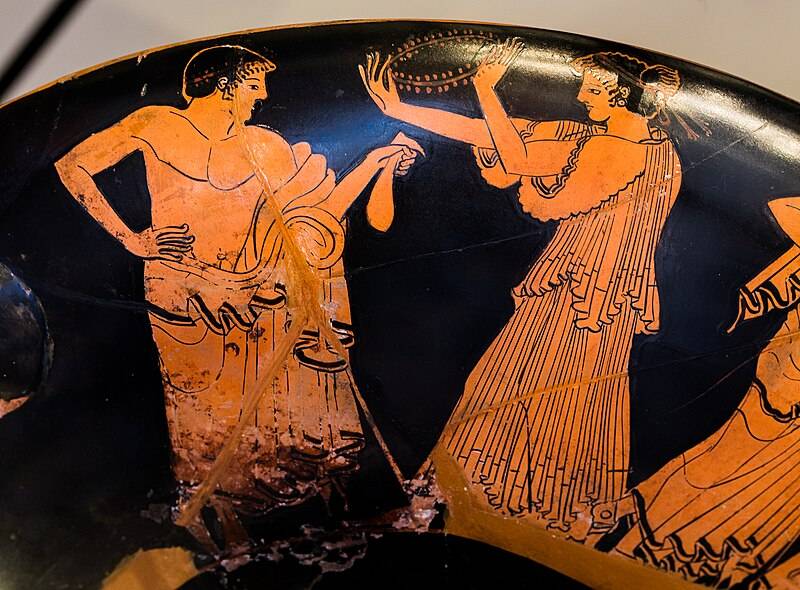
特徴: ポリス(都市国家)の発展、哲学や科学の進歩、チュニック(ヒマティオンやキトン)の着用

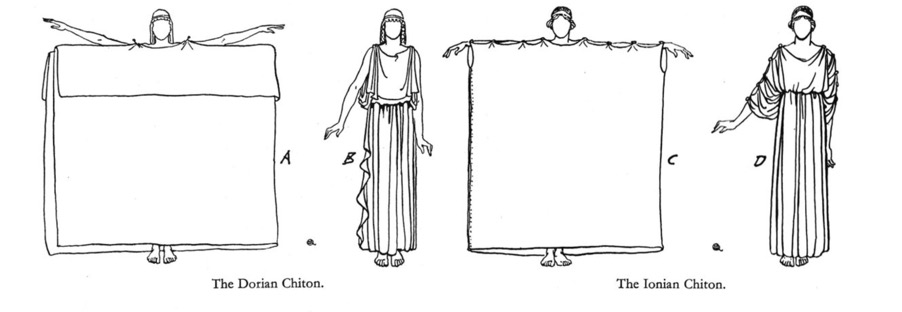
Characteristics: Expansion of the Roman Empire, widespread use of the tunica (tunic)

特徴: ローマ帝国の拡大、トニカ(チュニック)の普及
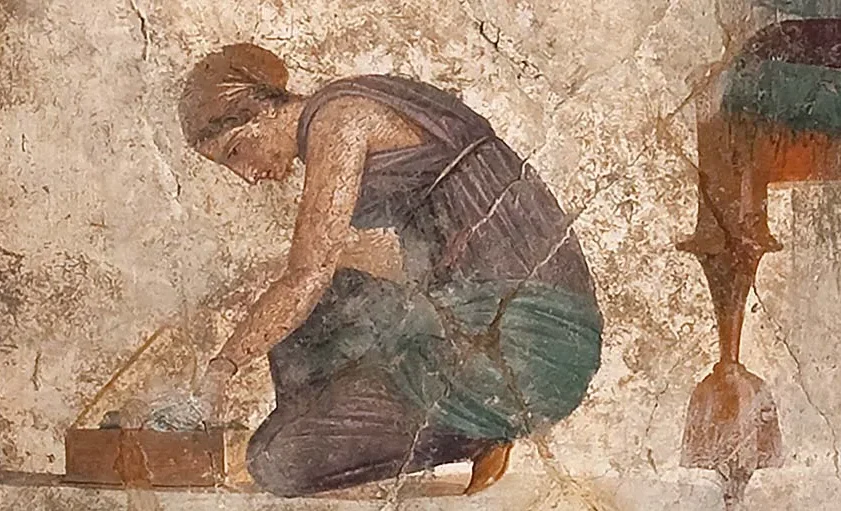
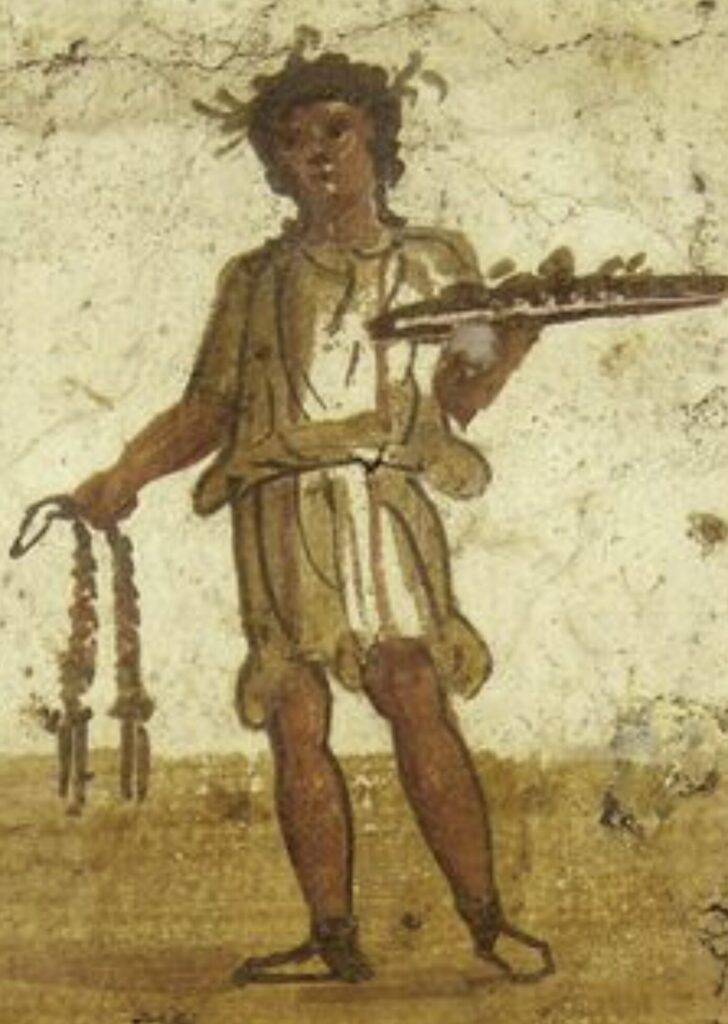
The toga (/ˈtoʊɡə/, Classical Latin: [ˈt̪ɔ.ɡa]), a distinctive garment of ancient Rome, was a semicircular cloth between 12 and 20 feet (3.7 and 6.1 m) long, draped over the shoulders and around the body. Typically woven from white wool, it was worn over a tunic. According to Roman tradition, Romulus, the founder of Rome, favored the toga. Initially, it was worn by both sexes and the citizen-military, but as Roman women adopted the stola, the toga became formal wear exclusively for male Roman citizens. Exceptions to this rule included women guilty of adultery and those engaged in prostitution.
Different types of togas indicated the wearer’s rank within the civil hierarchy. Various laws and customs restricted its use to citizens, who were required to wear it for public festivals and civic duties. The toga evolved from a simple, practical garment to one that was voluminous, complex, and costly, becoming increasingly unsuitable for anything but formal and ceremonial use. It was considered ancient Rome’s “national costume” and had great symbolic value. However, even among Romans, it was difficult to put on, uncomfortable, and challenging to wear correctly, and it was never truly popular. Whenever possible, those entitled or obliged to wear the toga opted for more comfortable, casual garments. Over time, the toga gradually fell out of use, first among lower-class citizens, then among the middle class. Eventually, it was worn only by the highest classes on ceremonial occasions.
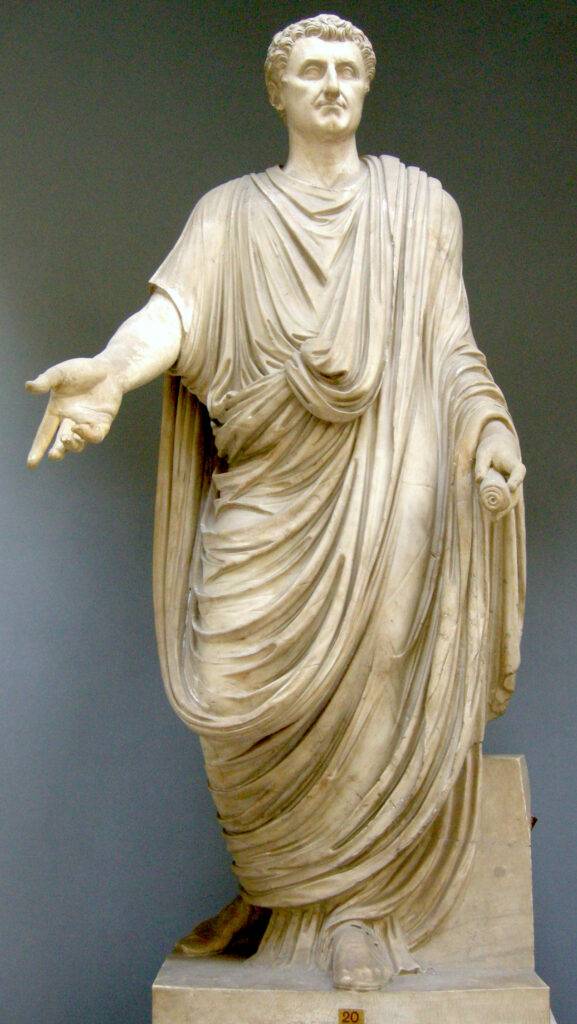
There are various theories about the shape of the toga, ranging from rectangular to oval. The most supported theory, based on marble statues, suggests it was shaped like an octagon cut in half. This hypothesis primarily applies to formal wear during the late Republic, and it’s unclear if everyday togas or earlier versions had this shape.When worn formally, each pleat had a specific name and required meticulous arrangement. Slaves would prepare the pleats with ancient irons the day before. Aristocratic households employed trained slaves for dressing.
Umbo (shoulder to chest)
Plicae (shoulder area)
Lacuna (feet area)
Sinus (back to waist)
Characteristics: This period was marked by the chaos following the fall of the Roman Empire. Germanic tribes established kingdoms throughout Western Europe. The Frankish Kingdom and the Byzantine Empire rose to prominence, and Christianity spread widely.
Economy and Society: The economy was primarily agrarian, and the feudal system began to develop. Decentralization advanced, with local lords ruling over peasants, which became a common social structure.
High Middle Ages (11th to 13th Century)
Characteristics: The power of the Church reached its zenith, and the Crusades were launched. There was significant growth in commerce and urban development, and guilds and merchants began to gain influence.
Economy and Society: Agricultural techniques improved, leading to population growth. The feudal system stabilized, and local castles and monasteries became centers of culture and economy.
Late Middle Ages (14th to 15th Century)
Characteristics: Despite the turmoil caused by the Black Death and the Hundred Years’ War, the beginning of the Renaissance saw a revival in culture and learning.
Economy and Society: Economic diversification and the growth of commerce increased the importance of cities. The feudal system gradually declined, and centralization advanced.
The chlamys was a short, cape-like cloak primarily worn by soldiers and travelers. Fastened at the shoulder with a brooch, the chlamys was designed for active use and practical purposes.
特徴: ローマ帝国の崩壊後の混乱期。ゲルマン部族が西ヨーロッパ各地に王国を築きました。フランク王国やビザンティン帝国が力を持ち、キリスト教が広まりました。 経済と社会: 農業経済が中心で、封建制度が発展しました。地方分権が進み、領主が農民を支配する形が一般的でした。
中期中世(11世紀~13世紀)
特徴: 教会の権力が頂点に達し、十字軍が行われました。商業と都市の発展が見られ、ギルドや商人が力を持ち始めました。 経済と社会: 農業の技術が進歩し、人口が増加。封建制度が安定し、地方の城や修道院が文化や経済の中心となりました。
後期中世(14世紀~15世紀)
特徴: 黒死病の流行や百年戦争などの混乱がありましたが、ルネサンスの始まりと共に文化や学問が再び活発になりました。 経済と社会: 経済の多様化と商業の発展により、都市の重要性が増しました。封建制度は徐々に衰退し、中央集権化が進みました。
The medieval tunic evolved dramatically from the simple and practical designs of the early Middle Ages, through the ornate and elegant styles of the high Middle Ages, to the complex and luxurious fashions of the late Middle Ages. This evolution reflects the social, economic, and cultural changes of each period, while also being heavily influenced by regional cultures and external interactions, leading to a wide variety of styles across Europe.
In the early Middle Ages, tunics were primarily influenced by Germanic tribes and the remnants of the Roman Empire, featuring simple designs focused on practicality. Common materials included linen and wool, with wool being particularly favored in colder regions. As the Middle Ages progressed into the high period, tunics became more decorative, incorporating embroidery, lace, and gold thread trims. The aristocracy especially adopted these more elaborate designs, which became increasingly elegant.
By the late Middle Ages, tunics had grown even more intricate, featuring ruffles, pleats, and using luxurious materials such as silk and velvet. Aristocratic tunics often displayed religious motifs or family crests embroidered into the fabric, reflecting the economic prosperity and cultural exchanges of the time.
Tunics played a crucial role in various aspects of daily life, from everyday wear to ceremonial and official events. The decorations and designs on tunics went beyond mere clothing, serving as significant indicators of the wearer’s social status and cultural background. Medieval tunics are essential for understanding European history and culture, as their evolution symbolizes the diversity and richness of medieval European society. Through the study of tunic styles, we can gain insights into the social and cultural trends of medieval Europe.
- 410: Sack of Rome by the Visigoths
- 476: Fall of the Western Roman Empire
- 496: Conversion of Clovis I to Christianity
- 527-565: Reign of Justinian I in the Byzantine Empire
- 568: Lombards invade Italy
- 590-604: Papacy of Gregory I (Gregory the Great)
- 711: Umayyad conquest of the Iberian Peninsula
- 732: Battle of Tours (Battle of Poitiers) – Franks defeat the Umayyad Caliphate
- 800: Charlemagne crowned as Holy Roman Emperor
Western Europe:
In regions dominated by Germanic tribes, practical and durable designs were favored. In the Frankish Kingdom, more elaborate decorations were seen.
Byzantine Empire:
Luxurious tunics with vibrant colors and gold thread embroidery were common, and silk was also used.
- 410年: 西ゴート族によるローマ略奪
- 476年: 西ローマ帝国の崩壊
- 496年: クローヴィス1世のキリスト教改宗
- 527年-565年: ビザンティン帝国でユスティニアヌス1世の治世
- 568年: ロンバルド族のイタリア侵入
- 590年-604年: グレゴリウス1世の教皇在位
- 711年: ウマイヤ朝によるイベリア半島侵入
- 732年: トゥール・ポワティエ間の戦いでフランク王国の勝利
- 800年: カール大帝の神聖ローマ帝国皇帝戴冠
- 843年: ヴェルダン条約によりフランク王国の分裂
ゲルマン部族が支配する地域では実用的で耐久性のあるデザインが好まれ、フランク王国では豪華な装飾が見られました。
ビザンティン帝国:
鮮やかな色彩や金糸の刺繍が施された豪華なチュニックが一般的で、シルクも使用されました。
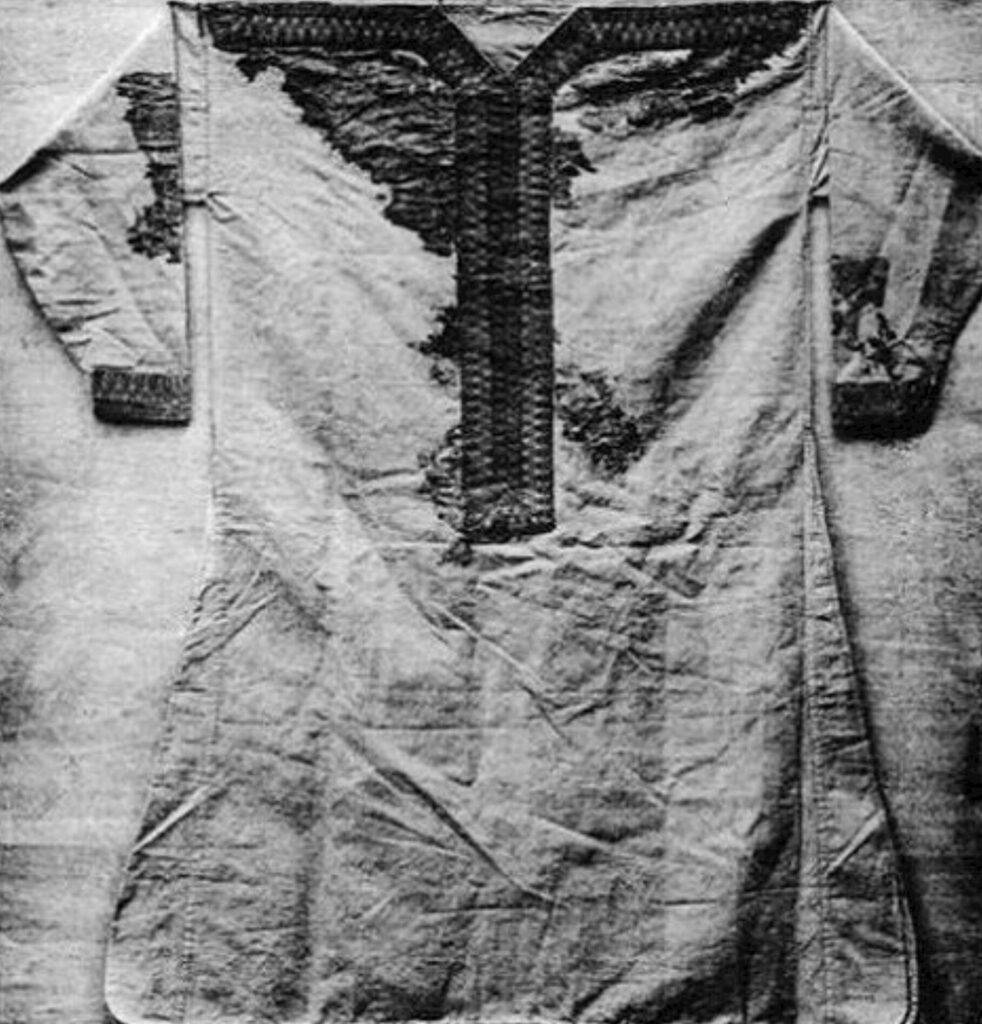
- 1066: Norman Conquest of England and the Battle of Hastings
- 1095: Council of Clermont – Call for the First Crusade
- 1099: Capture of Jerusalem by the First Crusade
- 1122: Concordat of Worms – Resolution of the Investiture Controversy
- 1187: Recapture of Jerusalem by Saladin
- 1204: Sack of Constantinople during the Fourth Crusade
- 1215: Signing of the Magna Carta
- 1241: Mongol invasion of Europe (Battle of Legnica)
- 1270: Failure of the Eighth Crusade
- 1291: Fall of Acre – End of the Crusader States in the Holy Land
Materials: In addition to linen and wool, expensive materials like silk became more commonly used.
Decoration:
Luxurious embroidery, lace, and gold thread trims became common, with the nobility favoring particularly ornate designs.
England:
Simple, practical Anglo-Saxon tunics were prevalent, but after the Norman Conquest, French-style ornate designs were introduced.
France:
Elegant designs influenced by Gothic architecture were popular, with elaborate decorations.
Italy:
Byzantine-inspired luxurious decorations and light, airy designs influenced by Southern Europe were common.
- 1066年: ノルマン・コンクエストとヘースティングズの戦い
- 1095年: クレルモン会議での第1回十字軍の呼びかけ
- 1099年: 第1回十字軍によるエルサレム奪還
- 1122年: ヴォルムス協約による教皇と皇帝の争いの終結
- 1187年: サラディンによるエルサレム奪還
- 1204年: 第4回十字軍によるコンスタンティノープル略奪
- 1215年: マグナ・カルタの制定
- 1241年: モンゴル帝国のヨーロッパ侵攻(リグニッツの戦い)
- 1270年: 第8回十字軍の失敗
- 1291年: アッコ陥落による十字軍国家の終焉
装飾: 刺繍やレース、金糸のトリムなど、豪華な装飾が一般的に。貴族階級では華やかなデザインが好まれました。
イングランド:
アングロサクソンのシンプルで実用的なチュニックが主流でしたが、ノルマン征服後はフランス風の華やかなデザインが導入されました。
フランス:
ゴシック様式の影響を受けたエレガントなデザインが流行し、豪華な装飾が施されたチュニックが好まれました。
イタリア:
ビザンティン風の華やかな装飾や、南ヨーロッパの影響を受けた軽やかなデザインが見られました。

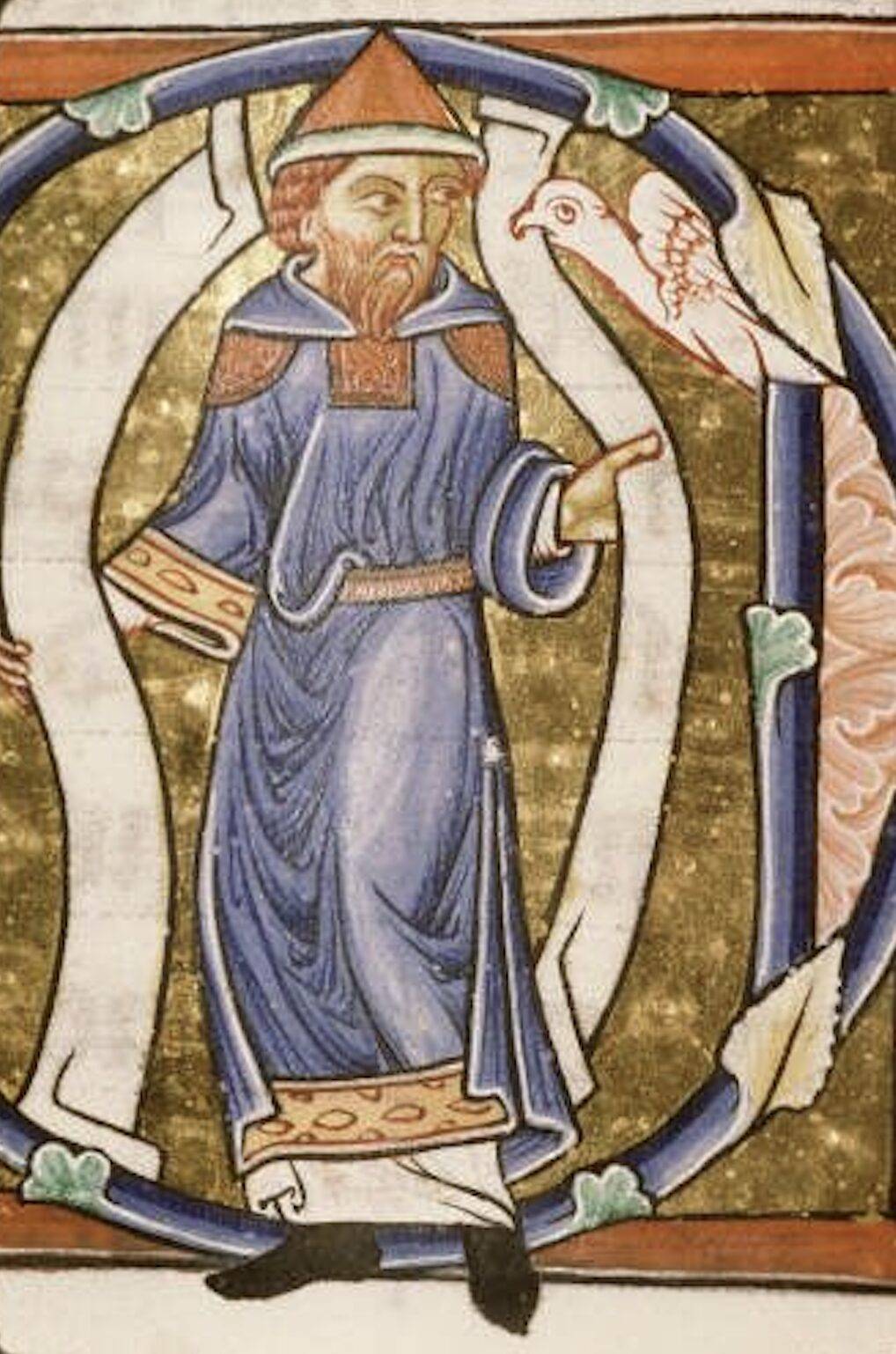
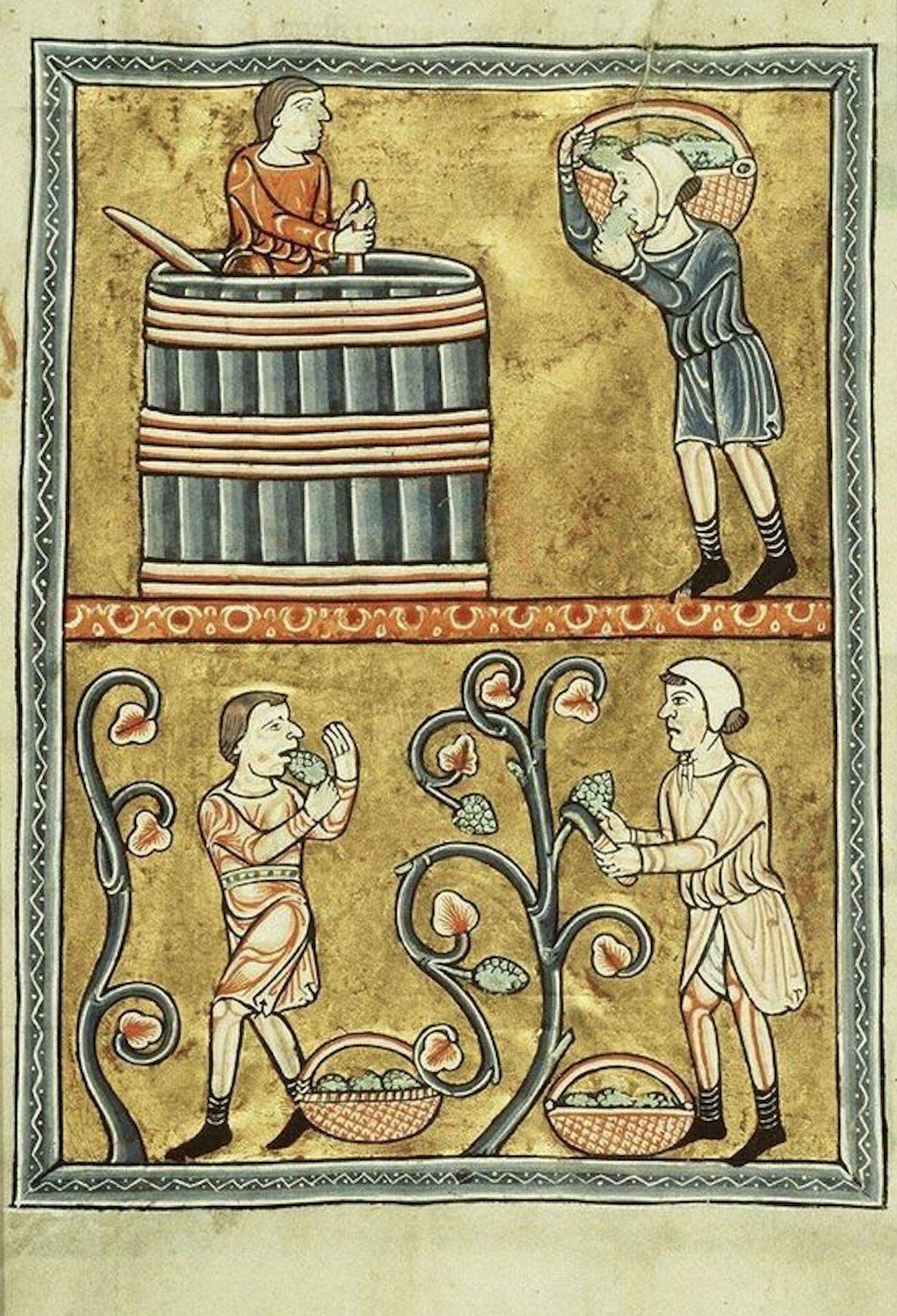
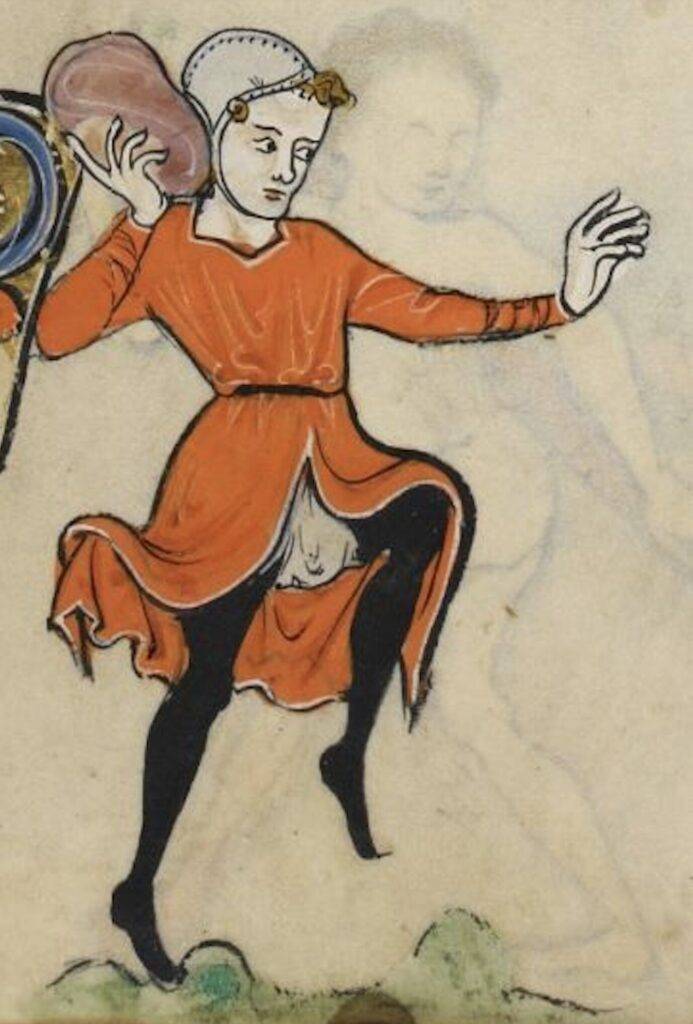
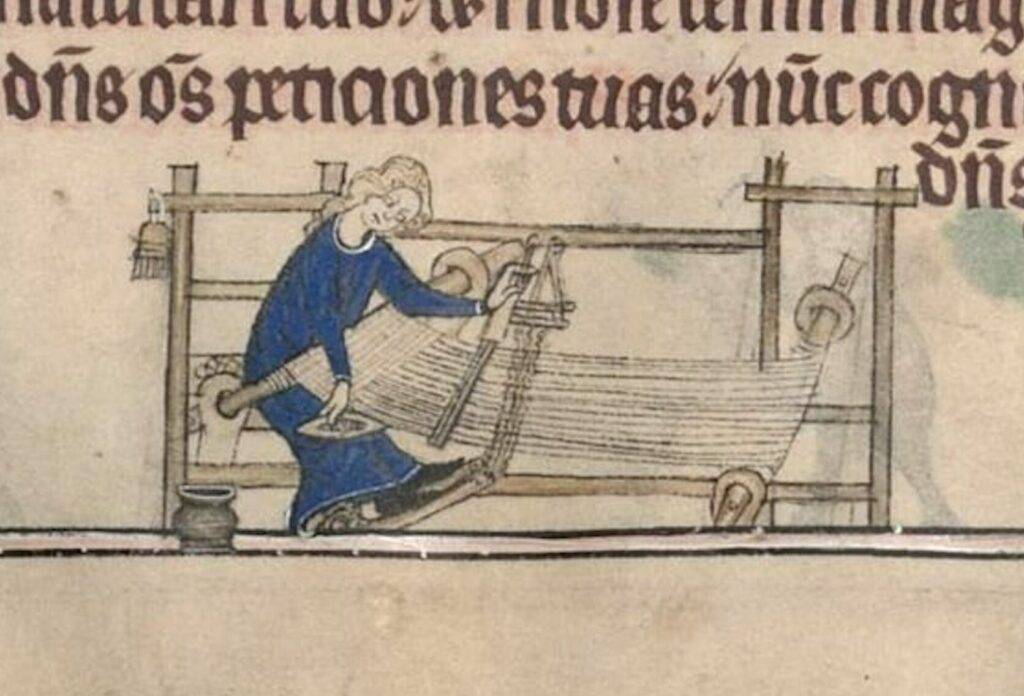
- 1337: Start of the Hundred Years’ War
- 1347-1351: Black Death plague in Europe
- 1378-1417: Western Schism (Papal Schism)
- 1381: Peasants’ Revolt in England (Wat Tyler’s Rebellion)
- 1415: Battle of Agincourt – English victory
- 1431: Execution of Joan of Arc
- 1453: Fall of Constantinople – End of the Byzantine Empire
- 1455-1487: Wars of the Roses in England
- 1492: Fall of Granada and the Reconquista completion; Christopher Columbus reaches the Americas
- 1494: Start of the Italian Wars
Practical designs influenced by the Hundred Years’ War were common, but the nobility favored elaborately decorated tunics.
France:
Lavish designs influenced by Baroque styles were popular, with extravagant court attire.
Italy:
Classical designs influenced by the Renaissance became fashionable, with artistic decorations.
Materials: Expensive silk and velvet were widely used, with elaborate decorations becoming more common.
Decoration: Embroidered, laced, and jeweled tunics were popular among the nobility, featuring religious motifs and family crests.
- 1337年: 百年戦争の開始
- 1347年-1351年: 黒死病のヨーロッパ大流行
- 1378年-1417年: 大シスマ(教会大分裂)
- 1381年: イングランドのワット・タイラーの乱
- 1415年: アジャンクールの戦いでイングランドの勝利
- 1431年: ジャンヌ・ダルクの火刑
- 1453年: コンスタンティノープルの陥落と東ローマ帝国の終焉
- 1455年-1487年: イングランドのバラ戦争
- 1492年: グラナダの陥落とスペイン統一、コロンブスのアメリカ大陸到達
- 1494年: イタリア戦争の開始
素材: 高価な絹やベルベットが多用され、豪華な装飾が施されるように。 装飾: 刺繍やレース、宝石で装飾されたチュニックが貴族階級で流行。宗教的なモチーフや家紋が含まれることも。
イングランド:
百年戦争の影響を受けた実用的なデザインが見られましたが、貴族階級では豪華な装飾が施されたチュニックが好まれました。
フランス:
バロック様式の影響を受けた豪華なデザインが流行し、宮廷文化の中で華やかな衣装が競われました。
イタリア:
ルネサンスの影響を受けたクラシカルなデザインが流行し、芸術的な装飾が施されたチュニックが好まれました。
中世のチュニックは、時代と地域ごとに大きく変化し、ヨーロッパ全体で多様なスタイルが見られました。その進化は社会的、経済的、文化的な変化を反映し、ヨーロッパの歴史と文化を理解する上で重要な要素となっています。
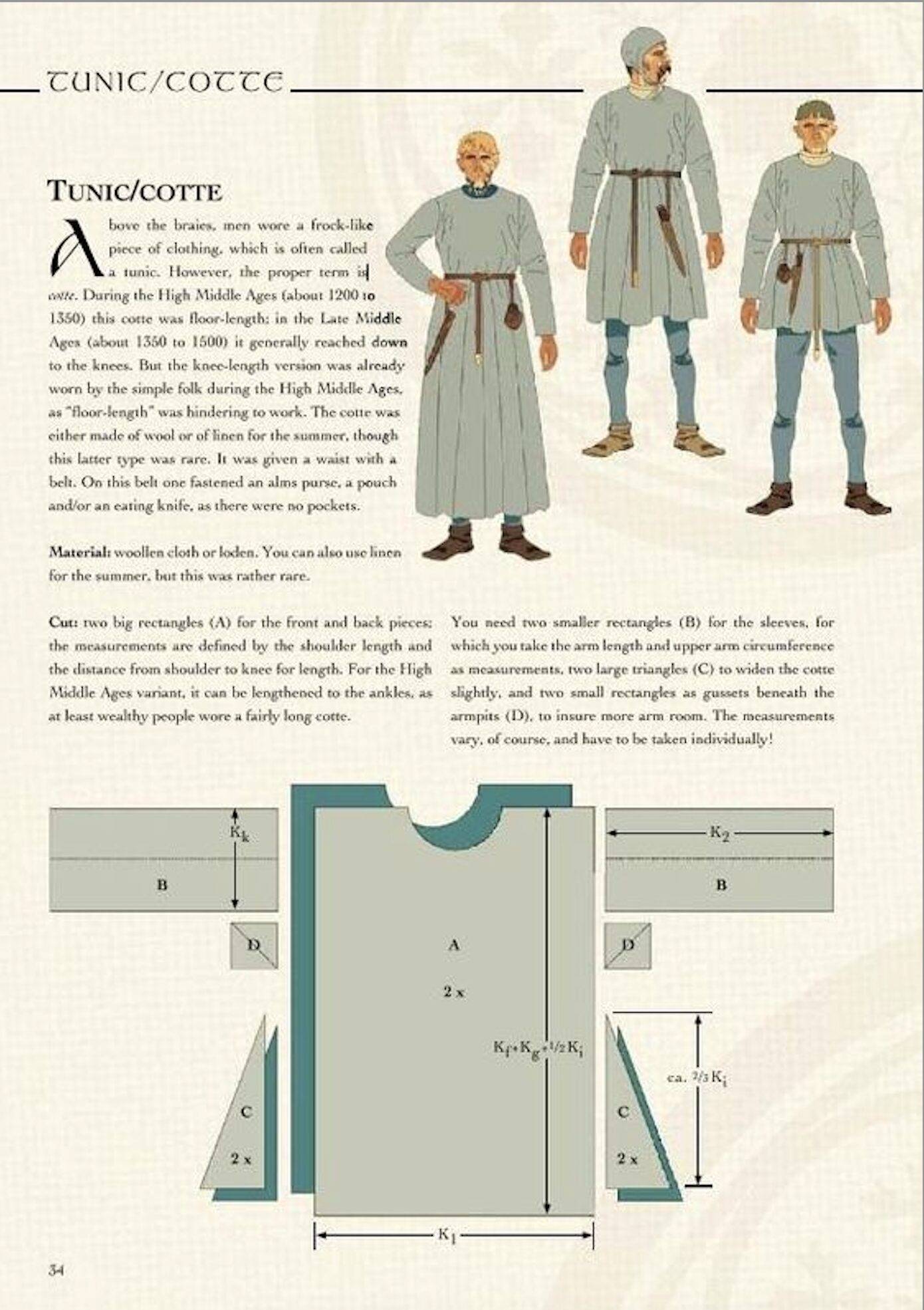
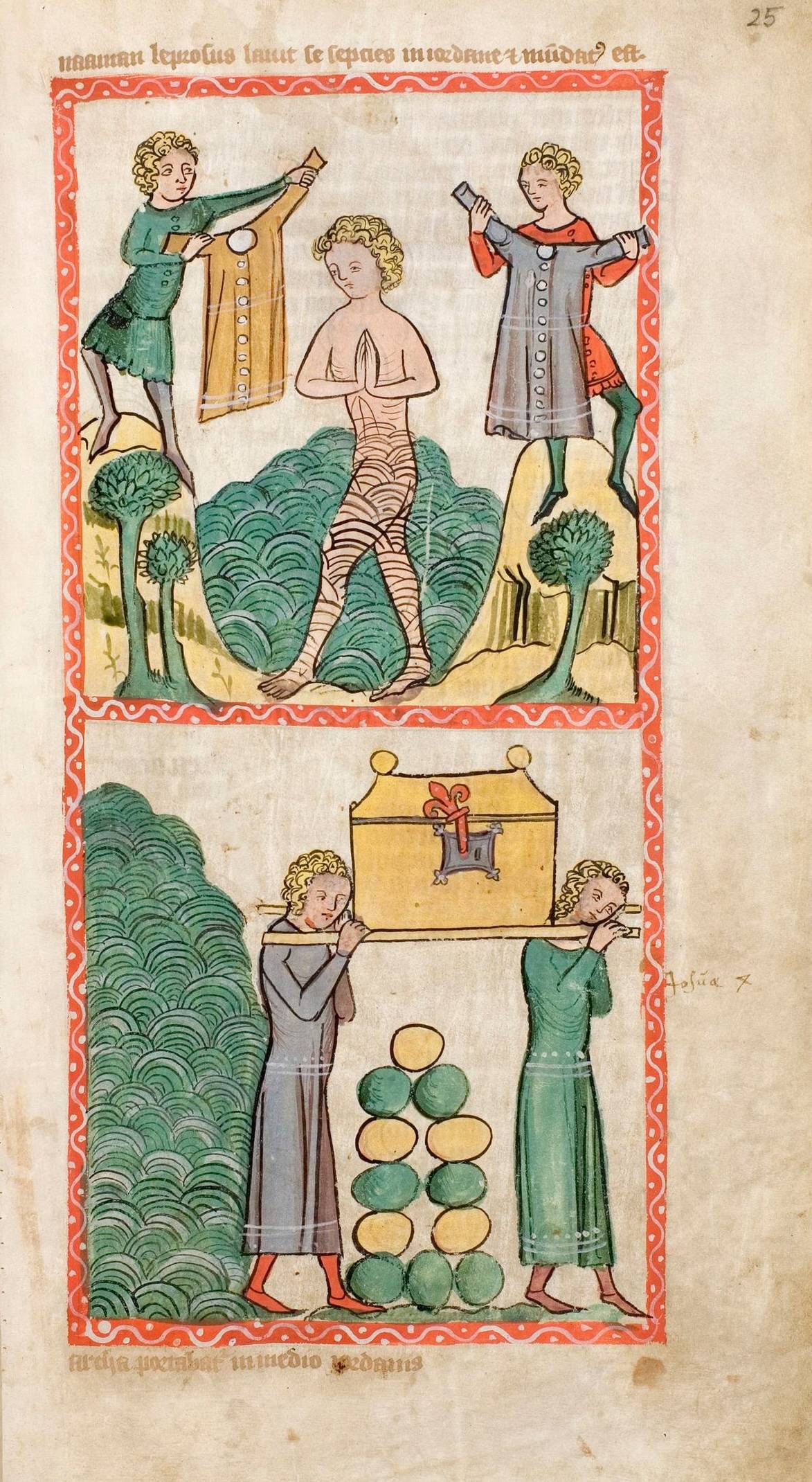
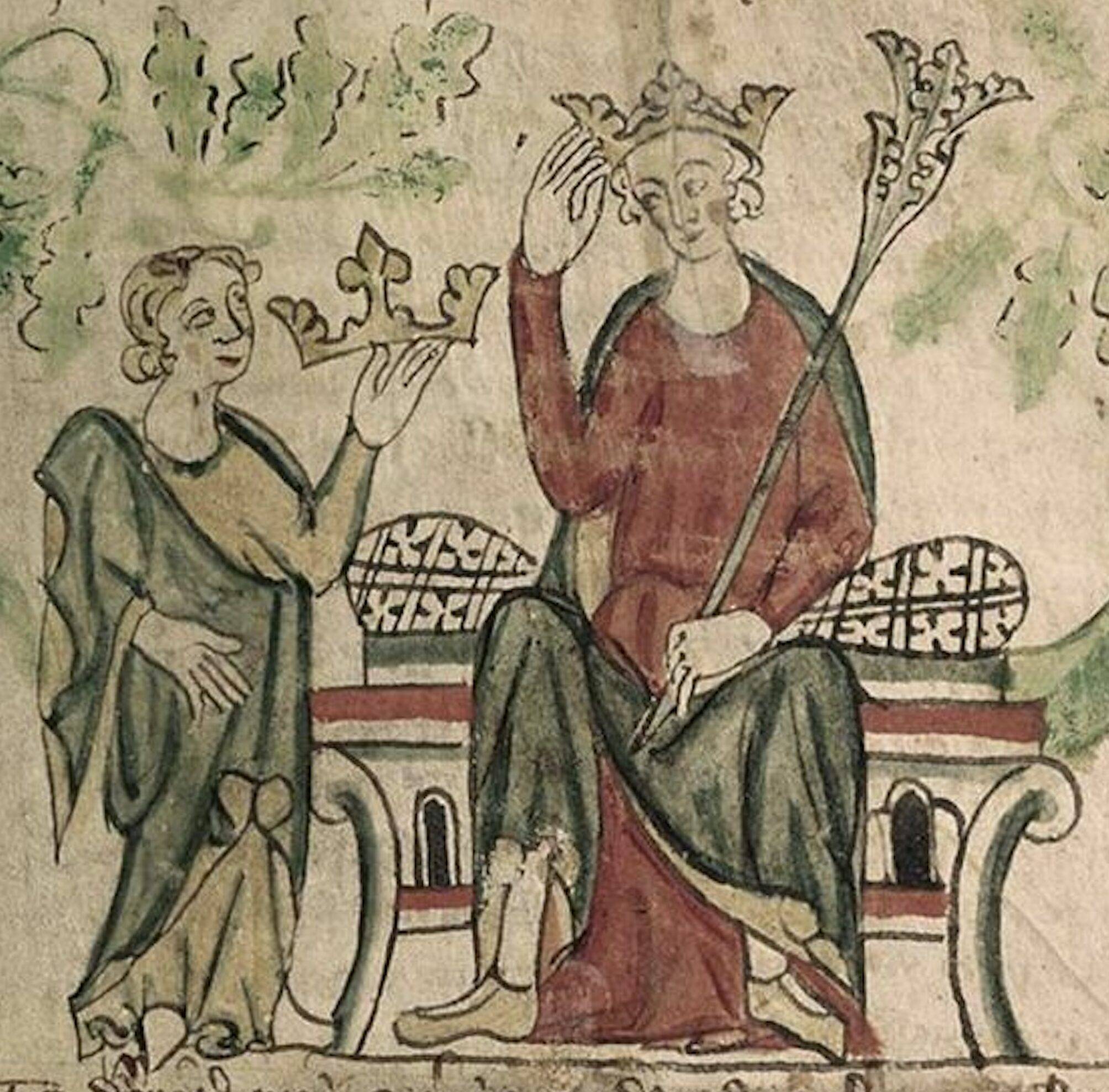
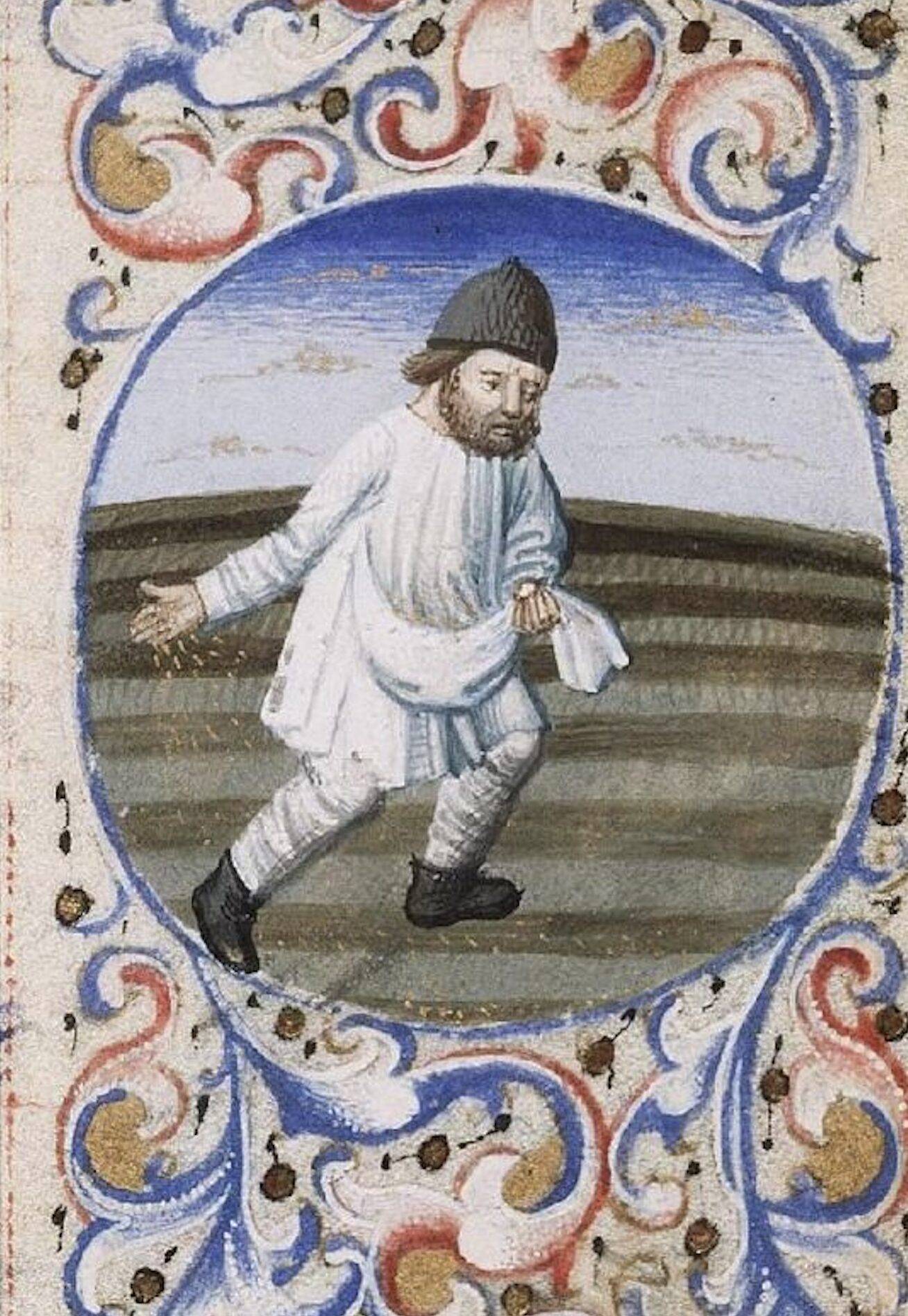
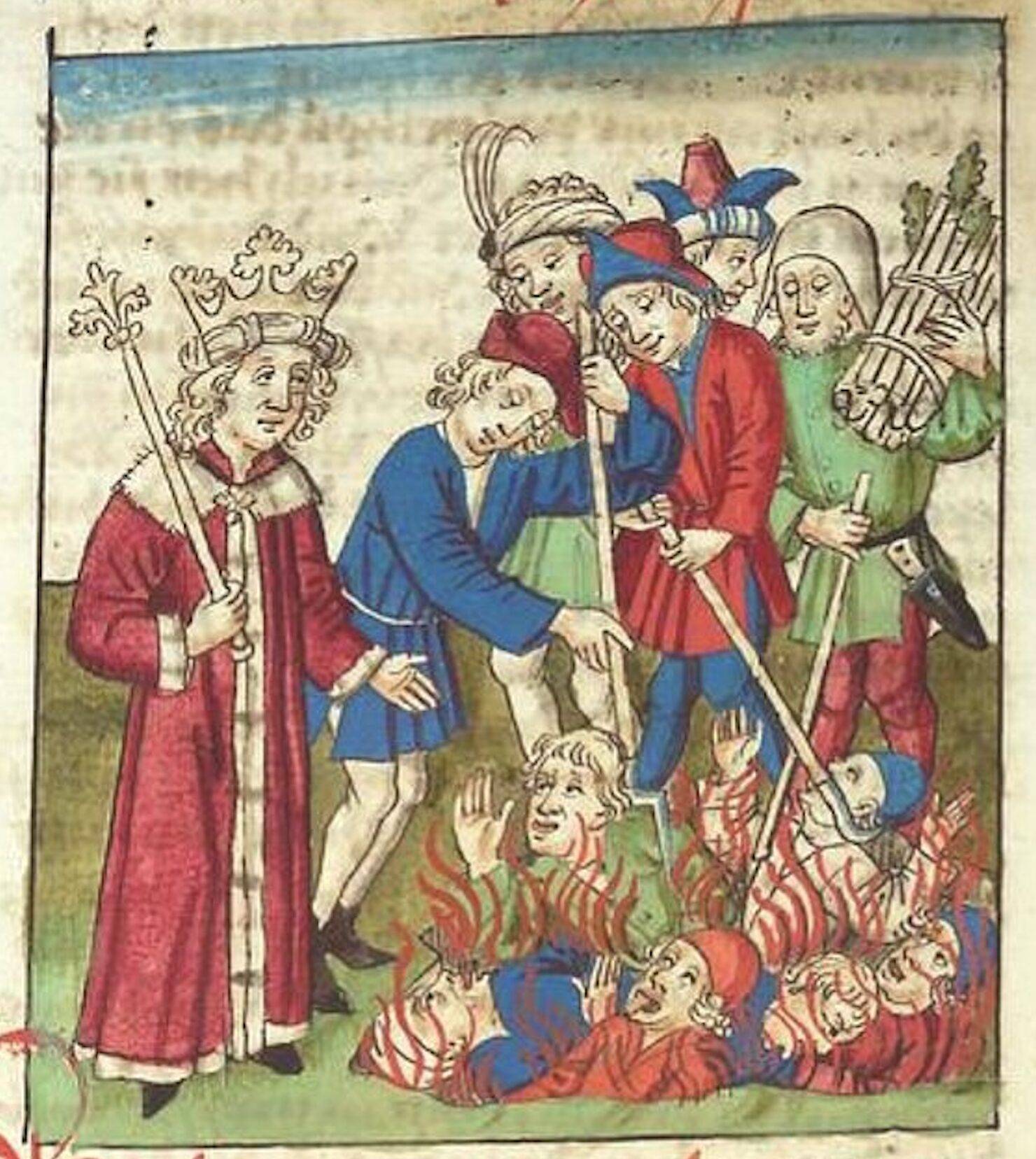
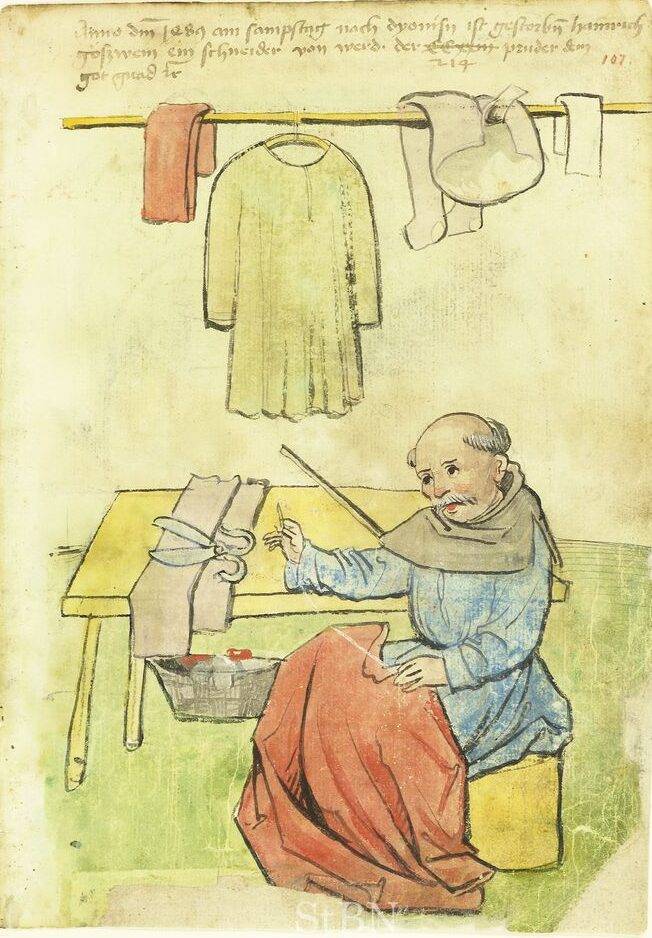
Der Schneider sitzt auf einem Hocker und näht mit einer Nadel an einem auf dem Schoß liegenden roten Mantel. Vor ihm auf dem Tisch liegen Elle und Schere und vorgeschnittener Stoff für eine Hose, während fertige Kleidungsstücke, u.a. ein grünes Wams und ein paar Hosen an der Wandstange hängen. Am Boden steht ein Korb.


